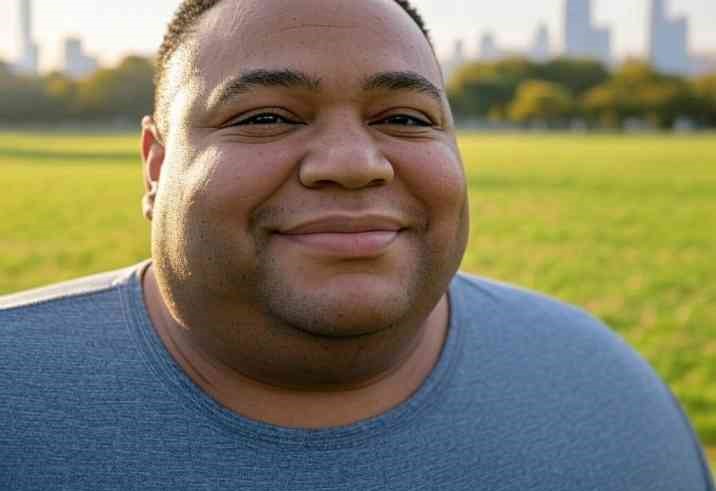
Discover why it’s vital to ease into a fitness routine. Avoid injuries, stay motivated, and build lifelong habits when starting a fitness program the right way.
Why Taking It Slow Matters When Beginning a Fitness Journey
“Go hard or go home.”
That’s a phrase we often hear when someone starts their fitness journey. It sounds motivating, sure—but it can also be a recipe for burnout, injury, and disappointment. The truth? When it comes to starting a fitness program, slow and steady truly does win the race.
Whether you’re a complete beginner or returning after a long break, easing into a routine is not a sign of weakness—it’s a strategy for success. In this post, we’ll explore why taking it slow is essential, backed by science, expert insights, and real-life experience.

The Misconception: More Effort Equals Faster Results
In our fast-paced world, it’s tempting to expect instant transformations. From viral 30-day shred programs to “get ripped quick” routines, fitness culture can pressure us into doing too much, too soon.
But let’s be clear: progress in fitness is about consistency, not intensity—especially at the start.
Pushing yourself too hard early on can lead to:
- Injuries: Muscle strains, joint pain, stress fractures.
- Burnout: Loss of motivation, mental fatigue.
- Plateaus: The body may stall or regress from overtraining.
According to the American Council on Exercise (ACE), overtraining is one of the top reasons beginners give up. Our muscles, tendons, and cardiovascular system need time to adapt to new demands.

Why Starting a Fitness Program Slowly Works Better
1. Reduces Risk of Injury
Jumping into high-impact or high-volume workouts without proper conditioning can wreak havoc on your body. Tendons and ligaments aren’t as quick to strengthen as muscles are. That’s why a beginner might feel strong but still be at risk of injury.
✅ Tip: Start with low-impact exercises like walking, bodyweight movements, or light resistance training. These help build foundational strength safely.

2. Builds Consistency Over Motivation
Motivation is fleeting. It spikes at the beginning and fades over time. But if you start with manageable workouts, you’re more likely to stay consistent.
Instead of overwhelming your schedule, integrate fitness into your routine gradually. That way, you’re building a habit, not forcing a chore.

Progression Plan Example:
| Week | Activity Type | Intensity | Frequency |
|---|---|---|---|
| 1-2 | 20-min walks, light yoga | Low | 3x/week |
| 3-4 | Bodyweight workouts | Moderate | 4x/week |
| 5-6 | Add light weights | Moderate-High | 4-5x/week |
Learn how to build workout consistency.
3. Improves Long-Term Results
Rushing through a new fitness program might get you quick wins, but it rarely results in long-term health. When you ease in, your body adapts better, you learn proper form, and you avoid setbacks.
Just like you wouldn’t sprint the first mile of a marathon, starting slow gives your body the time it needs to progress, not panic.
In a study published by the National Library of Medicine, participants who gradually increased intensity had significantly better cardiovascular improvements and less inflammation compared to those who started with high-intensity protocols.
4. Supports Mental Well-Being
Starting a fitness program can be emotionally overwhelming.Hesitation, concern about criticism, or previous setbacks can undermine self-assurance. Going too hard too soon may create negative associations with working out.
Instead, starting with achievable goals—like 10-minute walks or 15-minute home workouts—builds confidence and a sense of accomplishment. That positive reinforcement is key to long-term success.
Here’s how to make it work:
- Celebrate small wins: Finishing a short workout is better than quitting a long one.
- Monitor your journey: Keep a diary or use an app to track your progress and celebrate your achievements.
- Be kind to yourself: Understand that setbacks are part of the journey.
Real-Life Reflection: My Own Fitness Reset
After a year of sedentary living during the pandemic, I decided to restart my fitness journey. Like many, I overestimated what I could handle and jumped straight into intense HIIT sessions.
Result? Shin splints, low energy, and a growing sense of failure.
Only when I shifted gears and started walking daily, followed by gentle strength training, did I finally see progress—sustainable, enjoyable progress. I realized that starting slowly wasn’t just the smart thing to do—it was the only way that worked for me long-term.

Pacing vs. Procrastination: Know the Difference
Let’s set the record straight—taking your time doesn’t mean slacking off. It means being intentional. You’re still putting in the work, but in a way that respects your limits and builds consistency.
🔹 Pacing = Thoughtful progress, tuning into your body, allowing space for recovery
🔹 Procrastination = Delaying action due to uncertainty, fear, or poor planning
Think of pacing as your fitness ally. Master the fundamentals first, then gradually raise the bar.
Are You Pushing Too Hard, Too Fast?
Watch for these warning signs that your body might be overwhelmed:
- Persistent muscle soreness that won’t ease up
- Difficulty sleeping or staying asleep
- Low energy or reduced appetite
- A sense of dread before workouts
- Feeling unusually irritable or anxious
These don’t mean you should quit—just that it’s time to scale back. A certified trainer or physiotherapist can help you adjust your routine in a sustainable way.
How to Start Your Fitness Journey the Smart Way
✅ Set Specific, Realistic Goals
Skip the vague targets like “get in shape.” Instead, aim for goals you can measure:
- “Take 5,000 steps daily for 14 days.”
- “Perform 10-minute strength workouts three times weekly.”
✅ Pick Activities You Actually Enjoy
Staying consistent is simpler when you enjoy the task at hand. Into dancing? Try a Zumba class. Prefer peace and quiet? A walk or some light yoga could be perfect.
✅ Track Progress, But Don’t Obsess
Use tools like fitness apps or a journal to monitor how you’re doing. Just remember—your wellbeing matters more than the numbers.
✅ Don’t Skip Rest Days
Recovery time is essential.It’s when your body repairs and grows more resilient.. Pushing through without breaks can backfire and lead to burnout.
Final Thoughts: Progress Over Perfection
When you’re starting out, patience is everything. It’s tempting to go all in, but real fitness is built over time—not in a single week.
Begin with small, manageable steps. Acknowledge your wins. Tune into how your body feels. And most importantly, enjoy the ride.
Because fitness isn’t about punishment—it’s about unlocking your potential, one workout, one step, one moment at a time.
Let’s Hear From You
💬 Just starting your fitness journey? Faced any hurdles or surprises? Share your ideas below—I’m excited to hear what you think!
📩 Want more easy-to-follow wellness tips? Subscribe to our newsletter and stay inspired every week.

